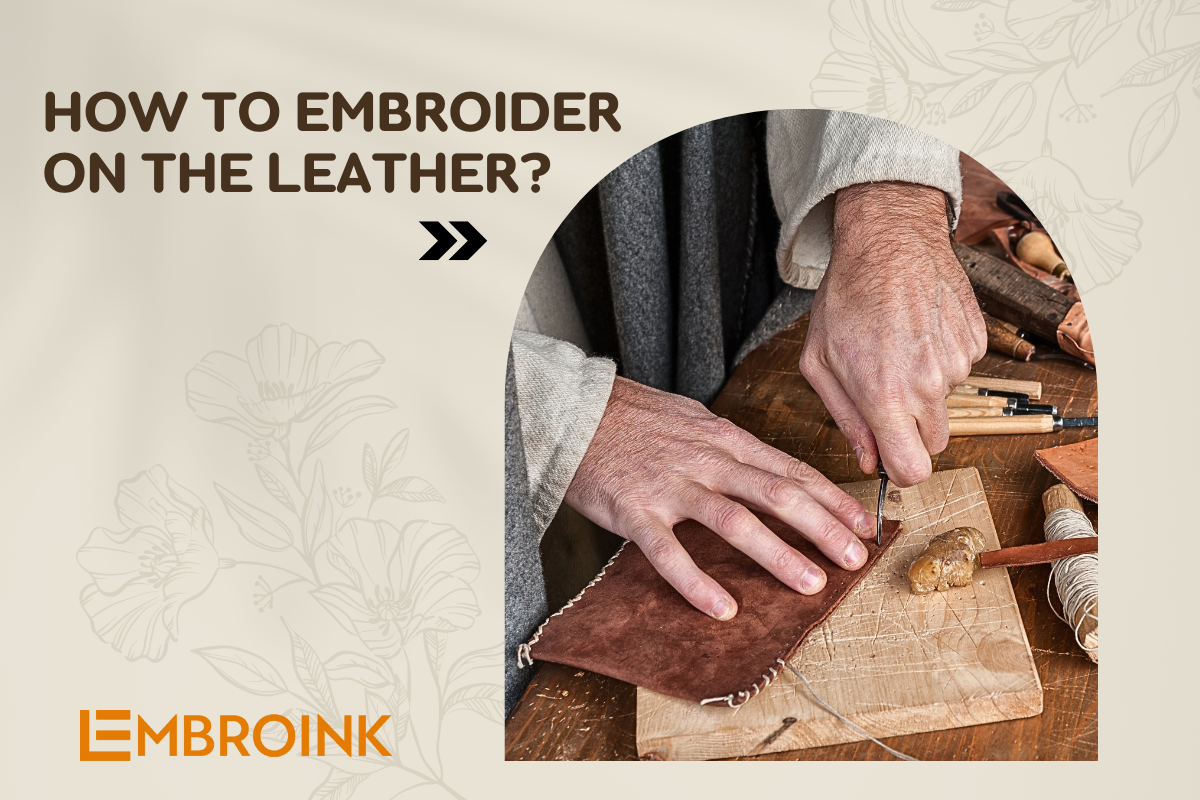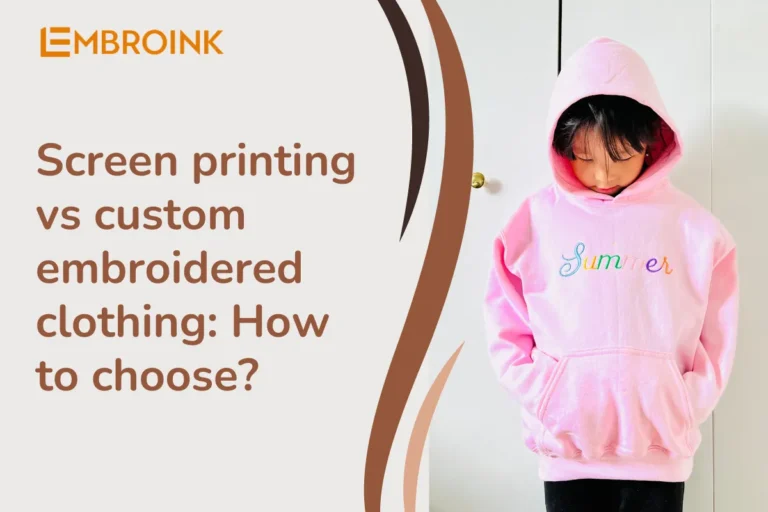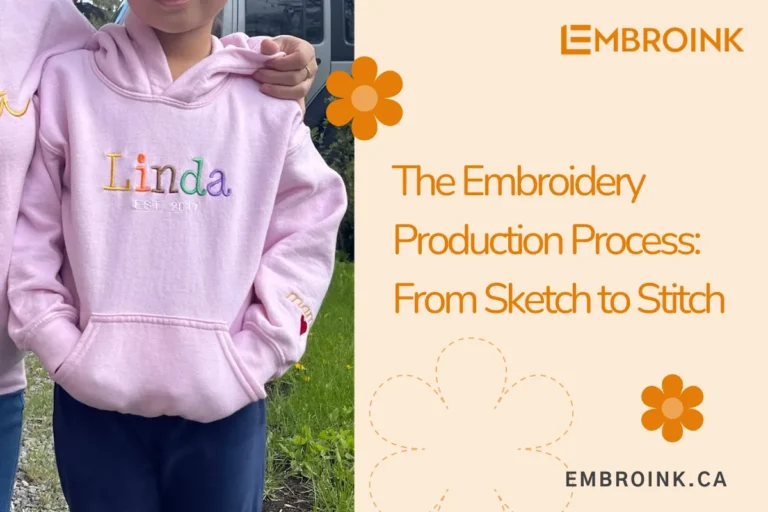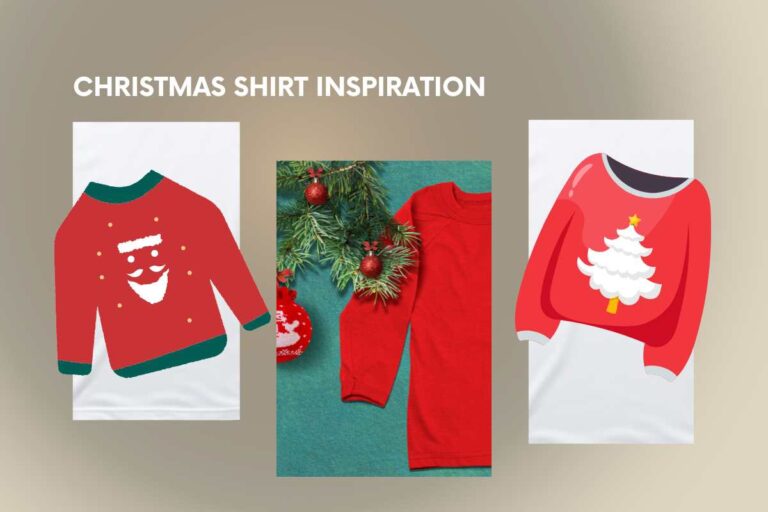How to embroider on the leather?
Think embroidering on leather is challenging? This tutorial will prove just how simple it can be! Before you know it, you’ll be adding beautiful stitches to all your favorite leather pieces. You can kick things off right away by crafting a leather card case. Much like embroidering on wood, the key to hand stitching leather is to pre-poke the holes. Once that’s done, the embroidery becomes a breeze!
What is the leather?
Leather is a refined material derived from the processing of various animal hides. Once an animal is harvested, its skin is sent to a tannery, where it undergoes cleaning, tanning, and dyeing to transform what was once considered waste into a luxurious and sought-after material.
Renowned for its beauty and exceptional durability, leather often reflects the life of the animal and develops a unique patina over time. With proper care, leather can last for decades, making it a timeless choice for many products.
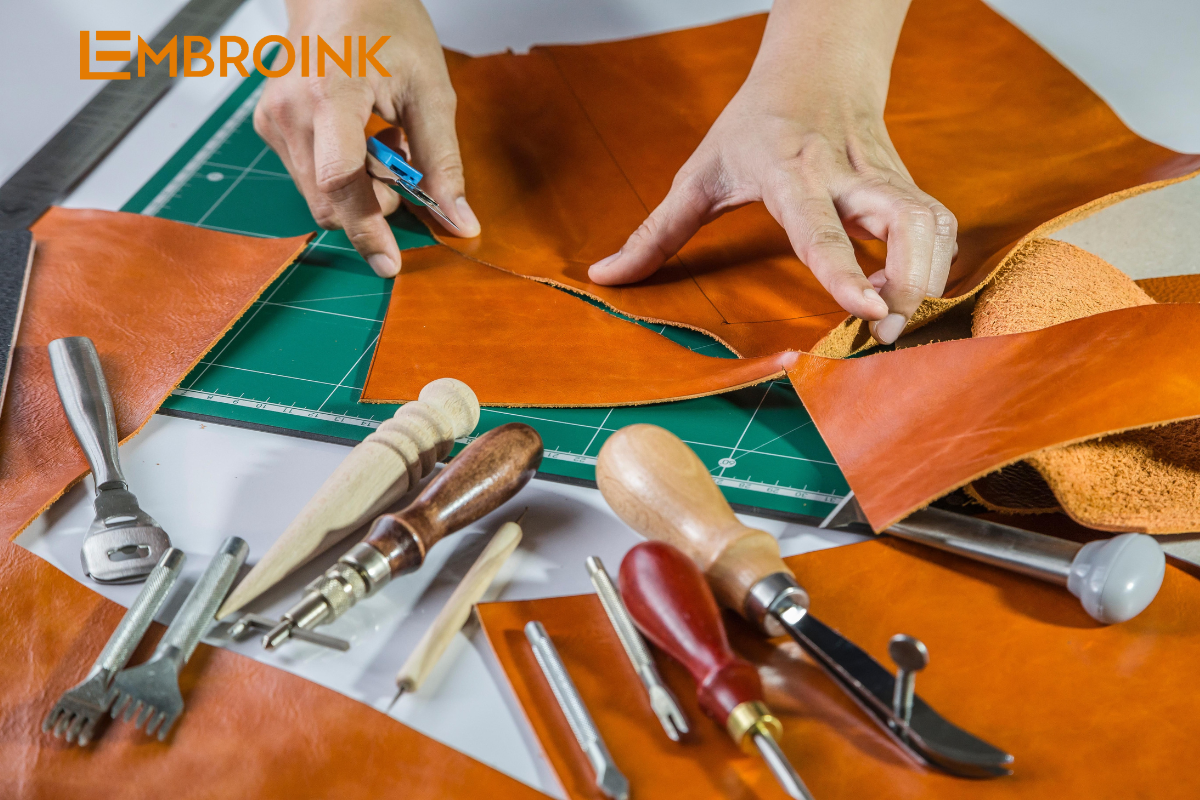
Clearing up myths and misconceptions
A common myth about leather is that animals are harvested solely for their hides. In reality, this is mostly false. The vast majority of leather produced comes as a byproduct of the meat industry. If leather weren’t created, these hides would simply go to waste.
To address ethical concerns, many tanneries have committed to using only hides that result from the meat industry, ensuring that consumers can purchase leather products with confidence.
History of leather
Animal hides have been utilized since ancient times. In the earliest days, pelts were harvested to make shoes, clothing, pouches, and a variety of other items. Back then, preservation methods were minimal, often limited to salting. Although hides were used continuously, the tanning process was not developed until about 12,000 to 6,000 years ago.
Early tanning techniques employed animal waste, urine, fats, and other bodily fluids to prevent decomposition. Since then, we’ve transitioned to more advanced chemical processes. However, the fundamental steps of salting, cleaning, and scraping leather have remained largely unchanged, with modern methods simply making the process faster and more efficient.
Leather overview table
| Characteristic | Details |
|---|---|
| Vegetable Tanned | Considered the best tanning method, this process uses natural tannins from tree bark and other organic materials. It produces firm, natural leather that may develop a beautiful patina over time. |
| Oil Tanned | This type of leather is treated with heavy waxes and oils. It is completely stuffed, resulting in a heavy-wearing hide that is one of the most durable types of leather, with excellent water-resistant properties. |
| Chromium Tanned | A more modern tanning method that employs chromium sulfates for preservation. It is quicker and less expensive, producing softer, more colorful leather that does not develop a patina. |
| Suede | Suede can be made from either vegetable or chrome-tanned leather. Its distinct feature is the surface finish, which is either sanded or shaved down to create a plush, fibrous texture. |
| Combination Tanned | This method combines both vegetable and chromium tanning processes, offering the advantages of both. It retains the natural qualities of vegetable-tanned leather while benefiting from the wear and water resistance of chromium tanning. |
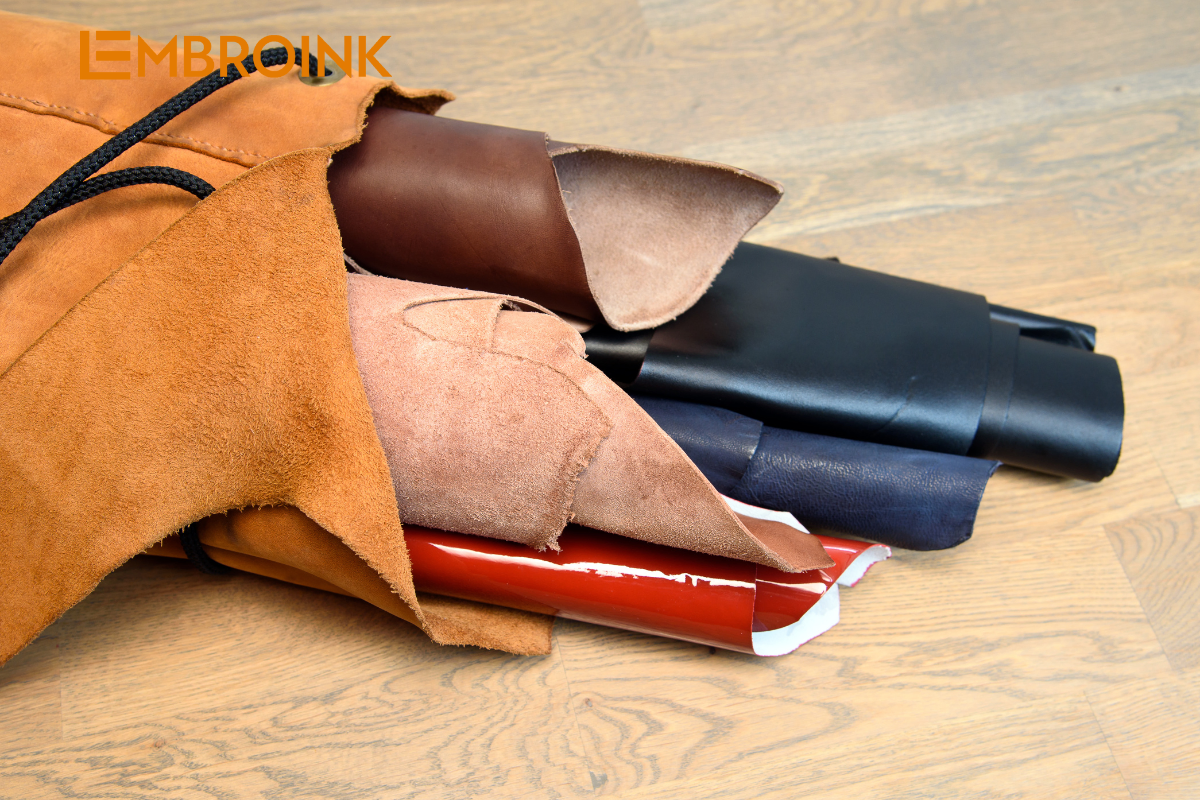
What is leather made out of
Leather is primarily made from the skins of animals that are harvested for their meat, including cows, pigs, deer, and sheep. By transforming these skins into leather, they are repurposed and prevented from becoming waste within the meat industry. After harvesting, the hides are salted for preservation, cleaned, and processed in tanneries around the world using various methods.
Each tannery has its own unique formula for preserving leather, which significantly impacts its final characteristics. A high-quality tanning method results in equally high-quality leather. Additionally, tanneries often apply color and a protective finishing surface, providing almost limitless possibilities for leather products.
What are the types of leather?
Leather is a versatile material that can be categorized into several types based on the animal hide, tanning process, or finishing methods used during manufacturing. Each type offers distinct qualities, allowing individuals to choose the best material for their projects. The main types of leather include:
- Vegetable Tanned: This method uses natural materials to produce high-quality leather. It is considered one of the best tanning methods, resulting in durable leather that can develop a beautiful patina over time.
- Chrome Tanned: This modern method focuses on the rapid production of leather using chromium sulfates. It produces softer, more colorful leather but does not develop a patina.
- Oil Tanned: This type of leather incorporates oils and waxes into the tanning process, enhancing durability and providing excellent water resistance. It is known for its heavy-wearing properties.
- Suede Leather: Suede is created by removing the top layer of leather, resulting in a soft, fibrous texture. This can be achieved through sanding or splitting the leather, giving it a unique look and feel.
Each type of leather undergoes specific processing methods that contribute to its unique characteristics, making it suitable for a wide range of applications.
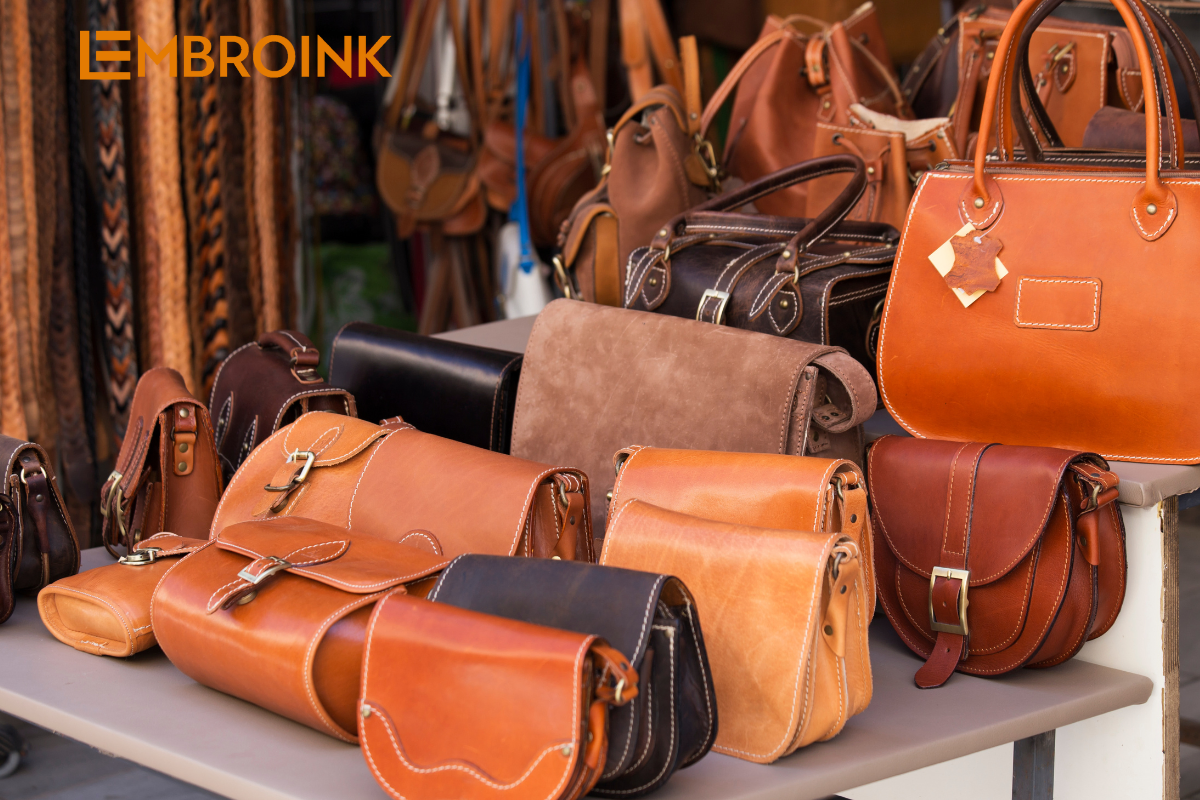
How to embroider on leather?
Embroidering on leather can add a unique and personalized touch to your projects. Here’s a step-by-step guide to help you get started:
Materials needed
- Leather (suitable for embroidery)
- Embroidery thread (polyester or nylon for durability)
- Embroidery needle (a larger needle designed for leather)
- Leather hole punch or awl (for pre-poking holes)
- Embroidery hoop (optional, depending on your project size)
- Fabric scissors
- Chalk or fabric marker (for marking your design)
- Template (if making a card case or similar item)
Step-by-Step instructions
- Choose Your Design: Select a simple design or pattern you want to embroider on your leather item.
- Prepare the Leather: Clean the leather surface and ensure it’s smooth and free of dust.
- Mark Your Design: Use chalk or a fabric marker to outline your design on the leather.
- Pre-Poke Holes: Use a leather hole punch or awl to pre-poke holes along the outline of your design. This makes stitching easier.
- Set Up Your Embroidery: If using an embroidery hoop, place the leather inside it to keep it taut.
- Start Embroidering: Thread your embroidery needle with the desired thread color and start stitching through the pre-poked holes.
- Finish and Trim: Once your design is complete, secure the thread on the back and trim any excess.
- Care for Your Embroidery: Apply leather conditioner if needed to keep the leather supple and protect your design.
By following these steps, you’ll be able to create beautiful embroidered designs on leather with ease!
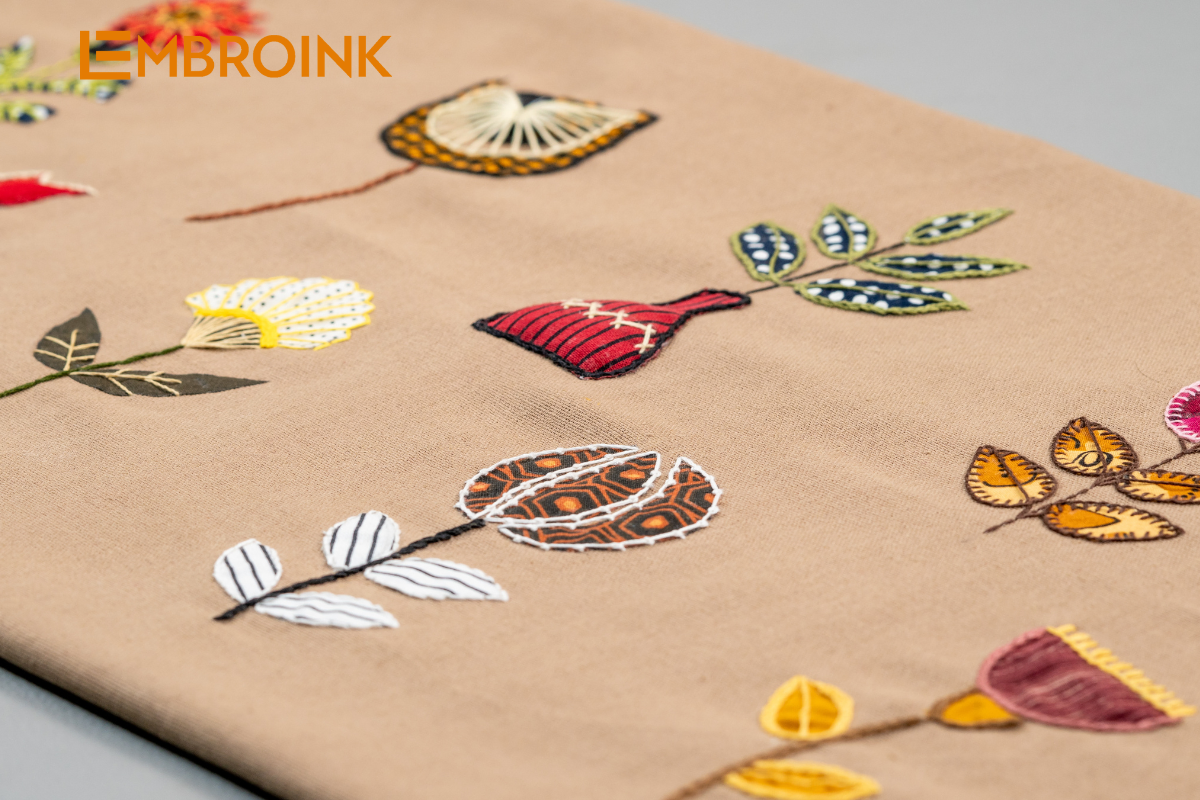
How to embroider on the leather with machine?
Embroidering on leather using a machine can give your projects a professional finish. Here’s a step-by-step guide of to help you successfully embroider on leather with a sewing machine:
Materials Needed:
- Leather (vegetable-tanned leather is ideal for embroidery)
- Embroidery thread (polyester or rayon for durability)
- Embroidery machine (with the capability to handle leather)
- Embroidery needle (a size 90/14 or 100/16 needle for leather)
- Stabilizer (tear-away or cutaway stabilizer)
- Hoop (appropriate for your machine and project size)
- Fabric scissors
- Chalk or fabric marker (for marking your design)
- Scotch tape or adhesive spray (optional, for securing the stabilizer)
Step-by-Step Instructions:
- Choose Your Design: Select a design compatible with your embroidery machine. Make sure it’s not too intricate, as simpler designs tend to work better on leather.
- Prepare the Leather: Clean the leather surface and ensure it is smooth. If necessary, iron it carefully on a low setting with a cloth on top to avoid damaging the leather.
- Prepare the Stabilizer: Cut a piece of stabilizer slightly larger than your leather piece. Attach the stabilizer to the back of the leather using scotch tape or adhesive spray to keep it secure during the embroidery process.
- Mark Your Design: Use chalk or a fabric marker to outline the design on the leather, ensuring it fits within the embroidery hoop.
- Hoop the Leather and Stabilizer: Place the leather and stabilizer in the embroidery hoop, making sure they are taut and centered.
- Set Up the Machine: Thread your embroidery machine with the desired thread color and install the appropriate embroidery needle. Set the machine to the chosen design.
- Test Stitching: It’s advisable to do a test stitch on a scrap piece of leather to adjust tension and ensure the machine settings are appropriate for leather.
- Start Embroidering: Once you’re satisfied with the test, load the hooped leather into your machine and start the embroidery process.
- Remove and Clean Up: After the embroidery is complete, carefully remove the stabilizer from the back of the leather. Trim any excess threads.
- Finishing Touches: Apply leather conditioner to keep the leather supple and protect your embroidered design.
By following these steps, you can achieve stunning machine-embroidered designs on leather, adding a personalized touch to your projects!

